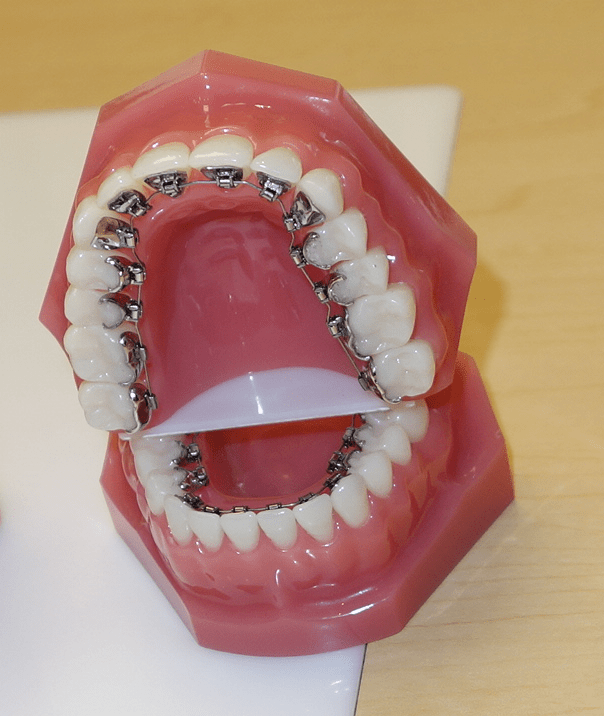Lingual Braces | Hidden Braces for Your Ideal Smile | Invisible Braces for Straight Teeth | Unnoticeable Teeth Alignment
Lingual Braces
What are Lingual Braces and How Do They Work?
Lingual braces are orthodontic appliances that fit up behind the teeth and therefore are not visible. The word “lingual” means tongue or palate and, when related to braces, refers to the inside surface of teeth.
Lingual braces are flat, comfortable and practically invisible because they are attached to the inside of your teeth. They are an effective and cosmetic alternative to traditional braces which are fixed to the front, or outside, surface of the teeth.
Lingual braces are an excellent choice for you if you want your teeth straightened with minimal effect on your appearance; these orthodontic appliances will not be visible.

Why Choose Lingual Braces to Straigthen Your Teeth?
Completely invisible to other people
100% customized for the best fit and results
Minimal discomfort and speech interference
If you are concerned about the appearance of traditional braces that are visible, then lingual treatment or ceramic braces might be the best choice for you. Cosmetic appearance is important for most of us; if you need to do presentations to audiences or clients and want to maintain a professional image while developing a great smile, a lingual system or ceramic braces are a good fit for you. Our certified orthodontist, Dr. Wang, specializes in lingual braces, ceramic braces, and a number of other types of orthodontic braces and can evaluate your needs and help you decide which treatment is best for you and your lifestyle. If lingual braces are the right choice for you, you can receive orthodontic care at our Surrey or Vancouver office.
Get a Consultation
PACIFICWEST IS ONE OF THE FEW ORTHODONTIC CLINICS THAT OFFER LINGUAL BRACES. LET US KNOW IF YOU HAVE ANY QUESTIONS!

Dr. Wang, DDS, MSc, FRCD(C)
Orthodontist

Dr. Kevin Lee, DMD, MSc, FRCD(C)
Orthodontist
dO YOU HAVE QUESTIONS ON LINGUAL BRACES?
Who Choose Lingual Braces?
- Adults in professions that generally frown upon the look with braces or in professions where wearing braces are discouraged.
- Anyone who are highly conscious on their looks.
Anyone wanting invisible braces find that lingual bracket treatment or ceramic braces provide effective solutions for straightening teeth and creating a beautiful smile. This orthodontic system for straightening teeth uses advanced technology to provide a solution that works well and that is not visible. Ceramic braces, made of tooth-colored materials that blend in with your natural teeth, also offer a more discreet alternative to traditional metal braces.
The expert Orthodontists at PacificWest Dental Group will determine if lingual braces are the best solution for straightening your teeth. We serve clients in our Surrey and Vancouver, BC offices.
Can Lingual Braces Treat Teeth Alignment Issues Effectively?
Yes! Lingual braces can treat teeth alignment and crowding issues as effectively as normal braces and Invisalign. This includes:
- Crowded Teeth
- Misisng Teeth
- Irregular Spacing
- Open Bite
- Over Bite
- Under Bite
- Cross Bite
Book a Consultation
Get started todaY by calling us at 604-558-0993 (Vancouver) OR 604-501-0993 (sURREY), or by filling the form below.
During your initial consultation, we will understand your situation, perform a visual examination of your bite, recommend a treatment plan and answer any questions or concerns you may have.

